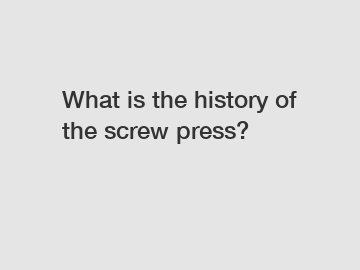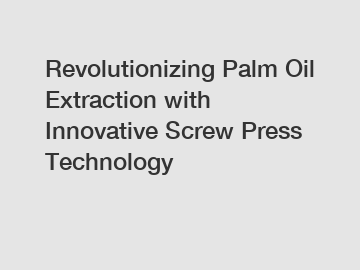What cars had an inline 8?
When the Pontiac was introduced in 1926, the trademark feature was its six-cylinder engine. By 1933, it was time to raise the game with a straight eight.
Here at Mac’s Motor City Garage, we’ve recounted how General Motors president Alfred P. Sloan conceived the 1926 Pontiac as what he called “a six-cylinder Chevrolet.” (See the feature here.) But in 1929, Chevrolet introduced its own six-cylinder car, leaving Pontiac without a distinct identity or really, a clear-cut justification for its existence.
Pontiac sales tumbled, and there was even talk of killing off the division. Sloan and Chevrolet-Pontiac chief William S. Knudsen were determined to rescue the Pontiac brand with an all-new car for 1933, and with an all-new engine. Boasting eight cylinders to trump Chevrolet’s six, this new Pontiac was to be billed as “the lowest-priced straight eight on the market.”
Actually, Pontiac had offered a V8 in 1932, but it was a cumbersome Oakland-based design that was expensive to manufacture and sold poorly, and it was dropped after one year. Working from a clean sheet of paper, Pontiac developed the straight eight under the direction of division chief engineer Benjamin H. Anibal. Features included a five main-bearing crankshaft, modern insert-type bearings, full pressure lubrication, a deep-skirted block for extra rigidity, and for the standard L-head valve arrangement, there was a special ribbed combustion chamber developed by GM Research (known as the GMR cylinder head). In its original 1933 form, the inline eight had a bore and stroke of 3.188 inches by 3.50 inches, yielding 223.4 cubic inches, and it was rated at 77 hp at 3600 rpm.
Anibal and his staff surely got it right, for while they couldn’t have known it at the time, their basic straight-eight design would remain in production for 22 years. The sturdy architecture permitted displacement increases every few seasons, from 232.3 CID (1936) to 248.9 CID (1937) and ultimately to 268.4 CID (1950). Continual improvements included a fully pressurized cooling system in 1936 and a Carter two-barrel carburetor in 1941 to improve air/fuel mixture distribution, a built-in shortcoming of the long, eight-in-line cylinder layout.
Meanwhile, continuing development (and better gasoline) supported steady increases in compression ratio, from the original 5.7:1 in 1933 to 7.5:1 by 1950, bringing a significant gain in power and efficiency. In its ultimate 1954 tune with 268.4 cubic inches and 7.7:1 compression ratio, the straight eight was good for 127 hp at 3800 rpm and 224 lb-ft of torque at 2200 rpm. (That works out to 126 psi BMEP, slightly better than the 1953 Ford flathead V8.) One interesting anachronism survived through all the years of straight eight production, however: cast-iron pistons.
For its 1933 introduction, the new Pontiac was officially marketed as the Economy Eight, selling the value story, and the straight eight was the only engine offered in model years ’33 and ’34. (1933 Economy Eight Sedan pictured above.) Volume jumped to more than 90,000 cars in 1933, more than doubling the 1932 numbers and planting the division back on solid ground. For 1935, a six-cylinder engine—closely based on the eight’s architecture but with two fewer cylinders and a larger bore and stroke—joined the lineup, and it was a solid seller as well.
Though most of the straight eight’s production life, it didn’t offer a great deal more displacement or output than the similar L-head six. What it offered was greater smoothness, refinement, and driveability, sometimes at only $25 more than the six. And when coupled with Pontiac’s upmarket looks and appointments, it was a winner in the showrooms. The 1941 Streamliner Torpedo in the lead illustration above is a classic of Harley Earl style.
From 1935 through 1942 the six sold in greater numbers than the eight. But from 1946 on, the eight outsold the six by a comforable margin, no doubt aided by the availability of Hydra-Matic starting in 1948, producing a smooth combination. However, by 1954 (below) the straight eight was overdue for a replacement—by then, Pontiac and Packard were the only remaining inline eights on the U.S. market. The Pontiac division would reinvent itself again with the 1955 Strato-Streak V8.
Recommended article:
5 Firewall Features you Must-Have
Top 5 Smart Features of a Smart Home
Health Benefits of Having a Routine
This Is Plastics: Plastics are critical to innovation in high performance technology
Difference between Steel Pipe and Tube material
VMM - Vision Measuring Machine
Tolerance and Measurement Accuracy
Share this:
Related
The engine is arguably the most important part of a car, as it wouldn’t be able to function. As the popularity of cars grew, there became a greater demand for luxury and racing vehicles. The engine that set the standard for modern high-performance automobiles was the straight-eight. Originally developed for aircrafts, the engine evolved into one of the most important car components of all time.
Early years
Charron, Girardot et Voigt were responsible for conceiving the first straight-eight in 1903. However, it was never built. A step forward came during WW1, with Mercedes developing straight-eight aircraft engines. The Mercedes DIV had various advantages, including efficient aerodynamics and good balance. The smooth running capabilities of the engine is partly why it was used for racing cars.
Isotta was the first company to adopt the straight-eight for its cars. The engine appeared in the Tipo 8, which debuted at the 1919 Paris Salon. Leyland Motors followed, introducing the OHC straight-eight powered Leyland Eight at the 1920 International Motor Exhibition.
Bugatti and Duesenberg were the brands that popularised the straight-eight. Using the engine, Bugatti dominated the lightweight car market, while Duesenberg participated in racing events like the Indianapolis 500. A famous car that used the straight-eight was the Bugatti Type 35, which won over 1000 races.
Post war decline
Despite the popularity of the straight-eight, the engine had its share of problems. The length meant that it needed a long engine compartment, making it unsuitable for modern cars. There was also crankshaft and camshaft vibration that messed with the overall performance. For example, a phenomenon called ‘crankshaft whip’ could lead to the engine being destroyed.
After WW2, the car market changed, resulting in the decline of the straight-eight. Technological improvements meant engines could be designed with higher compression ratios, eliminating the need for straight-eights.
In 1954, the straight-eight was replaced by the V8 configuration. While a lot of cars in the US went on to be powered by V8s, UK cars were powered by six-cylinder engines. This came down to the price of petrol and the damage left behind by the war.
Even though the straight-eight stopped being produced, it remains a historically important engine.
What cars had an inline 8?
A Brief History Of The Straight-Eight Engine
Recommended article:What is Code Scanning?
What does OWASP stand for?
How do you get a plastic part manufactured?
Top 8 Injection Molding Machine Manufacturers in the World
Famous Inventions: History of the Bulldozer
10 Things to Consider When Buying mini hd
17 questions to ask yourself as you declutter your closet











